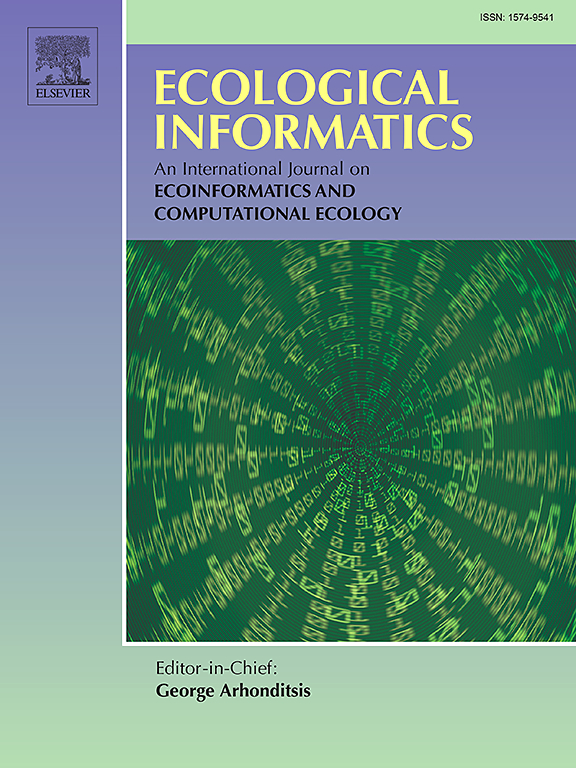Tricho-Vision: The use of computer vision in trichotaxonomy for enhancing wildlife conservation of priority species
IF 7.3
2区 环境科学与生态学
Q1 ECOLOGY
引用次数: 0
Abstract
Mammalian hair serves as a critical biological marker, aiding species identification essential for wildlife conservation and crime control. This study introduces the first extensive benchmark for classifying microscopic images of mammal hair from species prioritized for conservation. Our goal is to develop standardized methods, metrics, and best practices for utilizing advanced computer vision techniques, including Convolutional Neural Networks (CNNs), Vision Transformers (ViTs), and Swin Transformers, to classify hair samples across Order, Family, Genus and Species taxonomic levels. We present a novel dataset of 76 species, including critically endangered and endangered species, curated specifically for this classification challenge. The methodology integrates automated feature extraction of cuticle patterns and medulla structures, enabling high-precision species differentiation. Our findings demonstrate that Swin Transformer-based models outperform traditional CNNs and ViTs across taxonomic levels, with techniques like image cropping further improving classification accuracy by diversifying the training set. The proposed Tricho-Vision framework offers significant applications in biodiversity monitoring and wildlife crime investigation, facilitating accurate species identification from forensic hair samples. Additionally, we introduce a interactive tool for real-time taxonomic classification, showcasing the practical utility of our research and fostering broader interdisciplinary engagement in conservation science and forensic applications.

trico - vision:计算机视觉在trico分类中的应用,以加强重点物种的野生动物保护
哺乳动物毛发是一种重要的生物学标记,有助于物种识别,对野生动物保护和犯罪控制至关重要。本研究引入了第一个广泛的基准,用于分类哺乳动物毛发的显微图像,从优先保护的物种。我们的目标是开发标准化的方法,指标和最佳实践,利用先进的计算机视觉技术,包括卷积神经网络(cnn),视觉变形器(ViTs)和Swin变形器,对头发样本进行分类,跨目,科,属和物种分类水平。我们提出了76种物种的新数据集,包括极度濒危和濒危物种,专门为这种分类挑战而策划。该方法集成了角质层模式和髓质结构的自动特征提取,实现了高精度的物种分化。我们的研究结果表明,基于Swin transformer的模型在分类水平上优于传统的cnn和ViTs,图像裁剪等技术通过多样化训练集进一步提高了分类精度。提出的Tricho-Vision框架在生物多样性监测和野生动物犯罪调查中具有重要的应用价值,有助于从法医毛发样本中准确识别物种。此外,我们还介绍了一个实时分类的交互式工具,展示了我们研究的实际效用,并促进了更广泛的跨学科参与保护科学和法医应用。
本文章由计算机程序翻译,如有差异,请以英文原文为准。
求助全文
约1分钟内获得全文
求助全文
来源期刊

Ecological Informatics
环境科学-生态学
CiteScore
8.30
自引率
11.80%
发文量
346
审稿时长
46 days
期刊介绍:
The journal Ecological Informatics is devoted to the publication of high quality, peer-reviewed articles on all aspects of computational ecology, data science and biogeography. The scope of the journal takes into account the data-intensive nature of ecology, the growing capacity of information technology to access, harness and leverage complex data as well as the critical need for informing sustainable management in view of global environmental and climate change.
The nature of the journal is interdisciplinary at the crossover between ecology and informatics. It focuses on novel concepts and techniques for image- and genome-based monitoring and interpretation, sensor- and multimedia-based data acquisition, internet-based data archiving and sharing, data assimilation, modelling and prediction of ecological data.
 求助内容:
求助内容: 应助结果提醒方式:
应助结果提醒方式:


